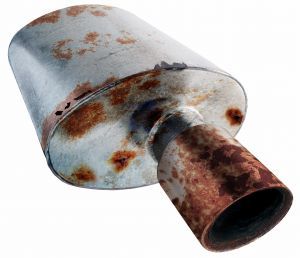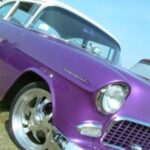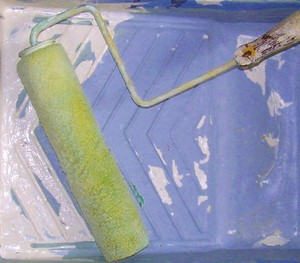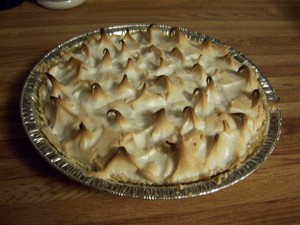Getting your classic car repainted can cost a lot of money, especially if it is not done right the first time. Lots of car collectors think they can save money by painting their own car but in the long run it may actually end up costing them more. You can save hundreds of dollars by doing some of the prep work yourself but, if you want a showstopper you may want to consider hiring a professional painter.
It can take forever to get the paint job perfect on your classic car especially if you don’t have the proper machinery like a compressor and paint booth. A high quality paint job can cost anywhere from $7,000 to over $15,000, including labor and materials. Often, paint shops are working on more than one car at a time, so your car may be away for more than a month if they have to do all the labor. Learn how to prep your classic car for paint while saving money with these tips.
Removing Old Paint
Prior to getting your classic car restored with a new paint job, all the old paint will have to be removed. This can be a time consuming process, or it can be relatively quick depending on the method you choose. No doubt, you will save the most money by sanding your car down by hand, on your own time, but it may take two solid weekends to get the job done right. If you want the perfect paint job you have to make sure all the old paint is completely removed exposing the bare metal.
If you don’t have the time to spend hand sanding your car there are faster methods. You can take your classic car to a media blaster and have the paint removed in a matter of hours or days, or you can have the body submerged into several chemical baths to remove all the old paint. The only problem the chemical bath poses is the fact it removes all the paint, including inside places that are hard to reach. Although chemical removal of paint is fast, it may not be the best choice if you want your classic car to last. Areas that cannot be reached easily, where paint was chemically stripped cannot be repainted leaving your car subject to rust and oxidation of the sheet metal.
You can also use chemical strippers in liquid, gel, or paste to quickly and efficiently remove old paint from your classic car. But, working with chemicals can be hazardous to your health and it may be a 2-3 step process before it is complete. If you decide to use a chemical paint stripper make sure that it is safe for sheet metal, and always use protective gear like gloves and a breathing mask.
After using a chemical stripper it is likely you will have to deactivate the chemicals by using a surface cleaner and/or chemical deactivator. This process may have to be repeated 3 or 4 times just to make sure the chemicals are completely cleaned from the surface of the sheet metal. Not following with a surface cleaner may be detrimental because chemicals allowed to sit on the sheet metal can pit and ruin the surface. Chemical stripping can be difficult for the beginner and mistakes can ruin your car. There are easier methods.
Media blasting may be the fastest and easiest method for removing old paint from your car, but will end up costing more than sandpaper and elbow grease. If you are really looking to save money just bite the bullet and sand it yourself. Removing old paint is a labor intensive and a time consuming process that can be quite costly. By sanding down your own classic car you can save several hundred dollars on labor costs. Before doing any sanding remove all trim, chrome, door handles, windows, wiring, interior, dash parts, and carpeting.
You should also remove the doors, trunk, hood, bumpers, fenders, and mirrors because these parts should be sanded and painted separately. Basically, you want to strip the car down to only the body and frame. Before sending your car to paint you should remove the engine, transmission, air conditioner, and other mechanical parts located under the hood because the engine bay will be painted as well.
Bodywork
As you begin to strip the old paint from your classic car you are likely to find old bodywork and rust. All old bondo should be removed and areas of damage will need to be repaired. Most body fillers can be removed with sandpaper but rusty areas may have to be treated or replaced depending on how bad they are. If you are not comfortable doing bodywork yourself, or you want it to come out professionally you should take your car to a body and paint shop.
Of course, you can still save a lot of money by doing the prep yourself and remove all the old bondo before you send your classic car out to the shop. Getting the body fixed right the first time will save you money on future repairs and will last longer than bad work. Bodywork is more than just repairing a damaged area and it takes a certain amount of skill and an eye for detail to get it right.
If you can do bodywork, apply and sand the body filler in thin layers. It is harder to remove excess bondo than it is to add more. You may have to repeat the process 3-4 times, or until the surface is level and smooth. Once you achieve the desired look, seal the surface with glaze specifically made for body filler, and sand until smooth. Areas of rust may have to be replaced or repaired. Unless you are really good at welding new sheet metal, or priming and repairing rust holes you should take your car to a body repair shop to have rusty areas fixed. Surface rust can be treated easily using store bought chemicals and spray primers. If parts like floor pans and exhaust pipes are rusty now would be a good time to remove and have them replaced.
Priming
Priming your classic car before sending it to the paint shop can save you lots of money when it comes to labor and supplies. Before you can prime your classic car you should scuff the entire body so the primer can stick well. Priming you car will help the paint adhere to the surface better and will help prevent rust for a long time. Before applying any primer to the body of your car, use a surface cleaner to remove all particles, dirt, and dust. Use compressed air to blow out dust from tight areas and then vacuum the shop or garage to eliminate dust that may end up getting stuck in your primer.
It helps to slightly wet the floor after vacuuming to keep remaining particles from getting kicked up into the air. If you are going to prime your classic car before sending it to the paint shop, purchase a few gallons of epoxy primer, primer sealer, etching primer, surfacing primer, and a couple of cans of guide coat at your local automotive supply store. Do not buy primer products in spray cans except for the guide coat. Use an air compressor and paint nozzle to evenly spread primer over the surface of the car. If you don’t have a compressor, you can rent or buy one from a number of home improvement stores, or a tool rental business.
As with all priming and painting, wear a filtered breathing mask to protect your health. You should also wear long sleeves and long pants, or a standard painting jumpsuit, and also cover your head with a hat or hood. When handling primers and paints wear protective gloves and eye goggles. Use an epoxy primer on the interior floor, inside door frames, under the hood, and inside the trunk. You should also use epoxy primer on the edges and bottoms of doors to prevent rust from water run off. Also use the epoxy primer on the edges and inside of the hood and trunk lid, for the same reasons. Allow adequate drying time and then sand to remove excess primer and smooth out the surface. After priming these areas seal them with a primer top coat. After sanding and sealing the epoxy primer, allow plenty of drying time before moving on to the next step.
Etching primer is actually a primer for priming, and should be applied to all the body parts. Etching primer causes a chemical bond to form between the surface of the sheet metal and the primer giving it more grab and stick. Apply etching primer to the entire surface of the body and all removed parts like the doors and fenders. After allowing the etching primer to dry you can begin applying the surfacing primer. Let each coat dry thoroughly and sand in between layers for maximum smoothness. Surfacing primer will help even out the surface of the sheet metal on your classic car and can be applied several times until the desired effect is achieved. You want the primer to be as smooth as possible without areas of over spray, or highs and lows. Imagine the primer coat is actually the paint that will be seen, of course you will want it to be as close to perfect as possible. Getting the primer perfectly smooth and even will help ensure your new paint job will look great.
Using a guide coat will help your eye pick out the areas of highs and lows, or over spray. Spray guide coat evenly over the entire surface to expose areas that still need work. Fix these areas and then sand the entire body of the car again. Repeat this process on doors, fenders, mirrors, and other metal parts as well. After this process is complete, spray on one more layer of surfacing primer and let dry. When the body is completely dry rinse with clean water (no soap) to remove dust particles and dirt. Dry the car using compressed air and make sure there is no water on or in the car before calling quits. Priming your classic car can be an exhausting process of spraying and sanding but you can save a ton of money on labor costs and supplies.
The more hand prep you do, the more money you will save. Spending thousands of dollars having your car prepped and painted is not economical for many car collectors and enthusiasts. Primer application alone can take a week or more to get just right but you will be thankful for the amount of money you saved. Preparing your classic car for paint will also save time at the shop and your car may be painted in a week or less, rather than a month or more. Even if you don’t have a talent and skill for body work or painting, by helping out you can save a lot of money and develop a greater appreciation for your “new” classic. For some post paint tips check out this article at http://www.associatedcontent.com/article/15445/post_paint_basics_of_rebuilding_a_classic.html on Associated Content.






